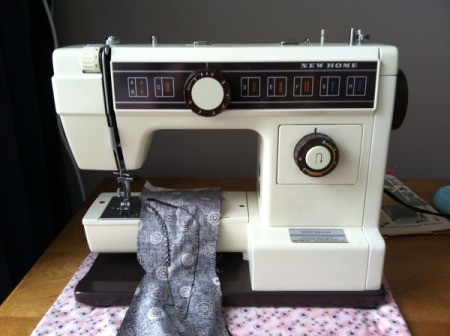I have an old New Home sewing machine (Model 654). I recently turned the pattern selector guide to make an overlock stitch which worked fine. When I switched it back over to a regular straight stitch, I noticed the machine was moving the material up and back twice to make a double stitch.
I switched it to a zig zag stitch to see what would happen and it is also making a double stitch with the zig zags as well. I have no idea how to get it back to just making a simple single stitch and just had it looked at recently so I'm hoping not to have to take it in again.
By Monique P.

Add your voice! Click below to answer. ThriftyFun is powered by your wisdom!
How long ago did you have it looked at? It's entirely possible the tech who worked on your machine made a mistake - something that is VERY easy to do on a 'vintage' (older than 10-20 years) machine.
It's also, sadly, entirely possible that yet another part has failed on your vintage machine (assuming the reason you recently had it looked at was a failed part). I love vintage machines and have repaired many, but have given up on them as once one part fails another isn't far behind, and sourcing newly milled parts is very difficult. Unfortunately newly milled sewing machine parts for vintage machines are few and far between - manufacturers prefer you buy new machines altogether and so stop making many of the parts needed to maintain vintage machines.
Even more unfortunately, this lack of newly milled parts means repair techs have to use 'salvage' parts often with unknown histories - was the machine the part was salvaged from gently or roughly used, how many sewing hours are on that part already before installation to another machine, and the all important question - how much plastic or silicone is the part comprised of?
Sad but true. The only 'vintage' machines I work on now are desperation cases ("I can't afford a new sewing machine!"), non-electrics, or all metal electric machines. Electric vintage machines usually have so much plastic and silicone the parts begin to fail after about 25 years of even the most caring owner, and there is no way those machines are ever reliable again for any length of time once parts begin to fail.
It's heartbreaking if you are an active sewer, but if your machine is vintage and beginning to have repeat part failures, it's time for a modern comparable machine - one with a warranty.
Add your voice! Click below to answer. ThriftyFun is powered by your wisdom!